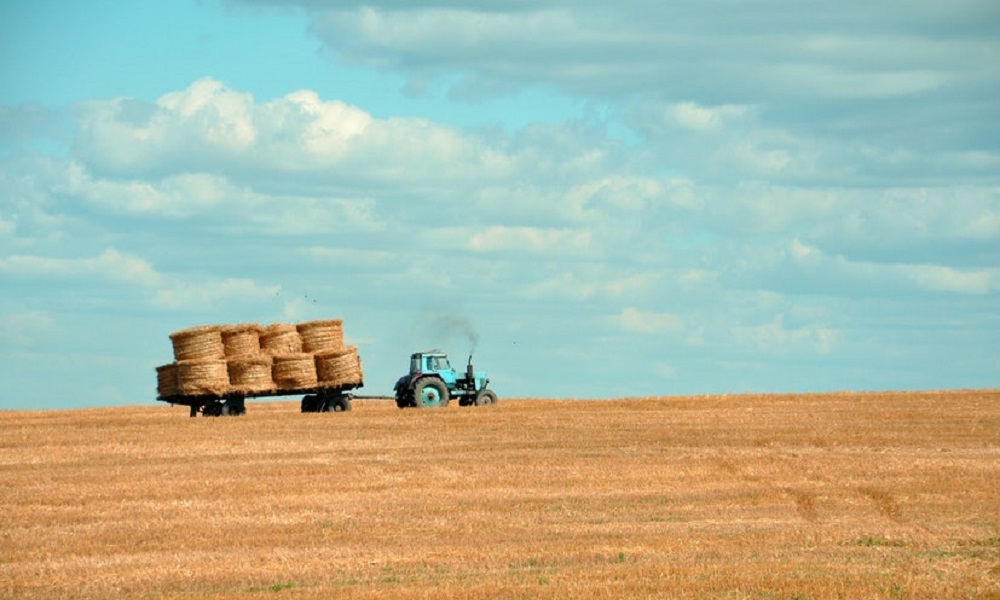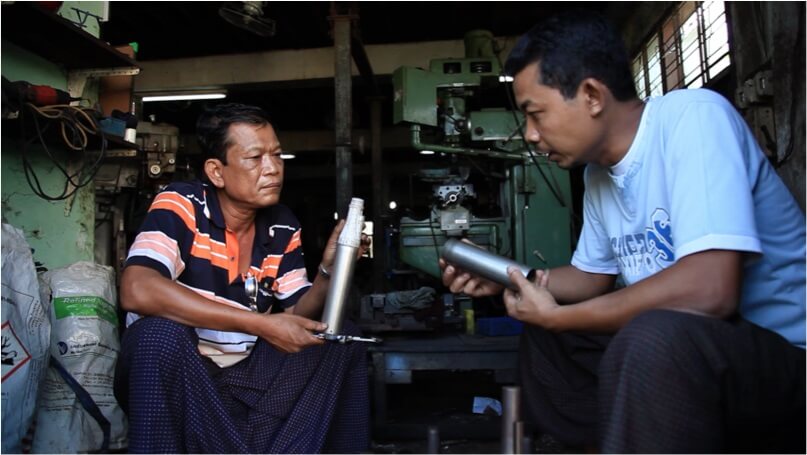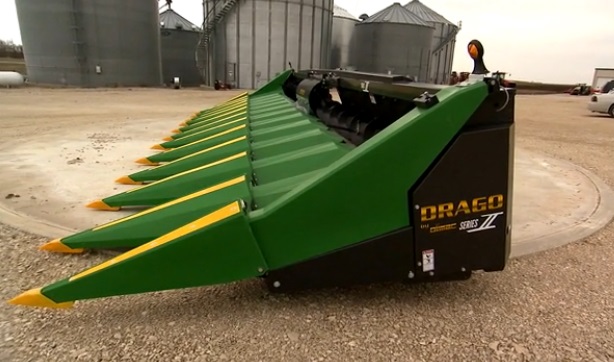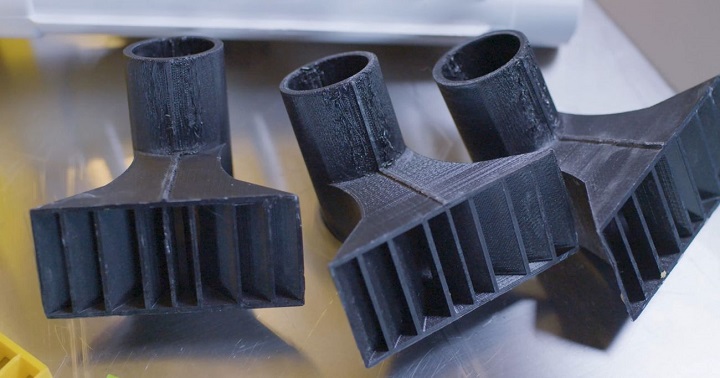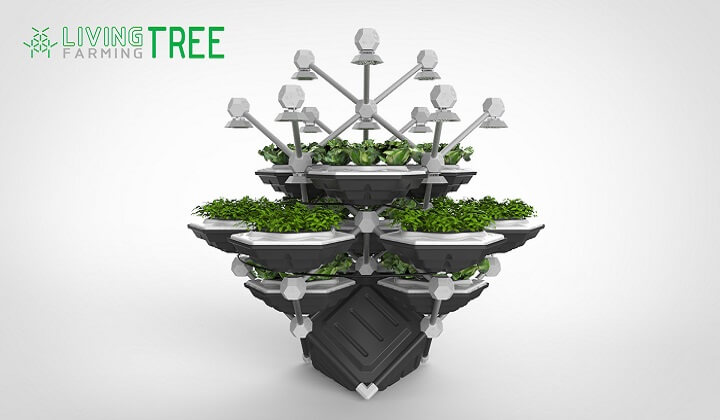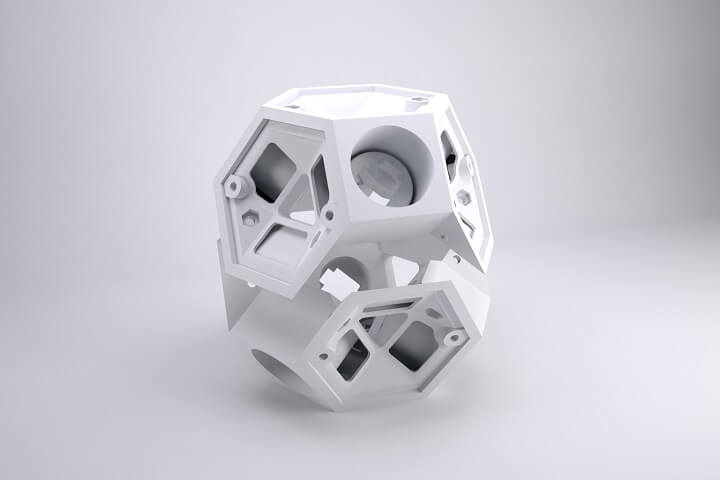3D printing for agriculture: Top 7 of the best projects
Posted By Lucie Gaget on Jul 4, 2018 | 0 comments
Additive manufacturing is a great asset for many different industries and can be used for various applications. You may not know it, but agriculture is one of the industries starting to make the most of the cutting-edge technology that is 3D printing. You will see in this blog post what are the benefits of this technology for agriculture and what are the most innovative projects developed in this sector. From urban gardens to 3D printed tools, we will see how additive manufacturing is helping the development of agriculture. Follow the guide.
The benefits of 3D printing for agriculture
Mass customization
Agriculture and technology have a lot to do together. For food production, farm equipment, farming products, 3D printing could be a great asset and simplify a lot of processes. 3D printing is the perfect tool for mass-customization. Indeed, you should know that this technology is perfect to create custom-made objects for many different sectors such as medical or automotive.
For agriculture, this mass-customization aspect is also a great advantage. Indeed, it is particularly convenient to get 3D printed tools, for example. This way, the tools can be adapted to the activity and their really specific use. Indeed, using digital manufacturing is a great way to manufacture objects that you have designed perfectly.
Useful both for prototyping and production
Moreover, this technique can be used both for prototype and production. Indeed, 3D printing is a great asset for your prototyping process but is now becoming an amazing production technique for various projects, as new resistant 3D printing materials are now available on the market. Check out our 3D printing material page to get more information about the materials that we are offering on our online 3D printing service.
Moreover, 3D printing is really a great advantage as farmers can really print devices on demand. It is especially useful to print devices in remote areas.
Plastic and metal 3D printing can totally be used for agriculture projects. But for what applications can 3D printing can be used in agriculture? What has been made? Discover the best applications of this cutting-edge technology for agriculture now.
The best 3D printing projects in agriculture
Here is a selection of the most interesting and innovative projects for agriculture using the 3D printing technology. Get inspired!
Farmers in Myanmar using 3D printing to create tools
Additive manufacturing is a great technique to improve some processes that are already existing. It can help farmers to manufacture traditional equipment and tools. That is exactly the technique used by farmers in Myanmar.
They were first using CNC machines to prototype their tools, but it was quite slow and expensive. Including the 3D printing technology in their production process helped them to create quality tools more quickly and improve their manufacturing process. This way, they can totally adapt the tools to their use and improve their farming activities. Moreover, for this kind of use, desktop 3D printer are great because they allow them to print directly on place.
https://3dprint.com/149881/myanmar-makerbot-farming/
3D printing, a great advantage for African agriculture
In some African countries such as Togo, farmers still have a difficult access to mechanized equipment. Sénamé Koffi Agbodjinou, founded an African digital fablab, he designed a 3D printer and built it only using waste and electronic components he found in the street. This 3D printer is working perfectly and helps local farmer to prototype their own tools. This additive manufacturing technology actually boosts their crop yields as they are free to produce all the tools that they need.
3D printed machine parts for agriculture
Most of the time, farmers are working with specialized machines. These are massive and expensive machines. Even to replace just one part, it can be quite expensive. Or the part that the farmer is searching for is maybe not on the market anymore. In this case, additive manufacturing is an amazing solution. Just like for the automotive industry, it is possible to print spare parts for farming machines. That is exactly the project of GVL Proto Poly. They are actually receiving a lot of 3D printing demands from farmers looking for new parts for their machines.
This project requires large 3D printers. With the quick evolutions made in the 3D printing industry, it will be soon more convenient to 3D print large parts like these in only one time.
https://www.3ders.org/articles/20141003-minnesota-company-bringing-3d-printing-services-to-individual-farms.html
3D printing for urban farming
The company Farmshelf has developed an autonomous system allowing anybody to start a smart indoor farm. Developing a new business is hard and quite expensive. Thanks to 3D printing some entrepreneurs are able to save time and money by using additive manufacturing to develop some parts of their project. And that is what the compan Farmshelf did.
3D printing allowed them to design the right parts for their project like mounting brackets and plant hangings. Then they were able to print custom parts quite quickly and test them. This would have been more expensive and would have taken more time with traditional manufacturing technique such as injection molding.
Custom 3D printed parts. credit: https://3dprint.com/198409/ultimaker-2-farmshelf-parts/
Small-scale organic farms in developing countries using 3D printing
Michigan Technological University’s Dr. Joshua Pearce made a whole study on how open source 3D printing could help small farms. Indeed, most of the world’s organically managed land is located in developing countries. And the thing is that farmers located in these countries are using labor-intensive tools. Thanks to additive manufacturing, it is possible to manufacture other efficient tools that could fit better the use of the local farmers. It could help organic farms, but also animal and water management!
Sustainable indoor garden using 3D printed connectors
Here is the project of an Italian start-up Hexagro Urban Farming. This company is trying to innovate with urban farming and hanging gardens. They choose to 3D print the little connectors of their Living Farming Tree:
https://www.hexagrourbanfarming.com/
Here is what a 3D printed connector look like:
https://www.hexagrourbanfarming.com/
These connectors can be adapted to any use of the tree and to the specific needs of the customers. The design can be customized to fit any place. This Living Farming Tree will be brought to the market quickly as the 3D printing technology is actually improving the whole product development, by making it really easier for Hexagro Urban Farming.
For more details about Hexagro Urban Farming, check out the video below:
3D printing to test agricultural devices
A Canada-based company has produced 3D printed parts in order help test a high-technological crop seeding system. Additive manufacturing is here really useful for the Research and Development department, allowing to test a whole device and create many iterations in order to develop the best product possible.
https://3dprint.com/48469/3d-printing-groundbreaking/
The ultimate part is made of cast iron and carbide because the parts need durability and strength. But for the test process, 3D printed parts can actually hold up the physical pressure. As it is really cheaper to test a 3D printed parts, and the process is also quite simple: they just have to modify their digital 3D model to get a different part. This way, they are able to make as many iterations as they need to develop their project. Thanks to this technique the company saved a lot of money!
Metal is expensive, and metal 3D printing is expensive too. That is way using another resistant 3D printing material is perfect for these kinds of projects.
The future of 3D printing for agriculture
A lot of applications are already possible in the farming sector using 3D printing, but it will certainly evolve in the upcoming years and become even more integrated into agriculture. Indeed, this technology has many benefits to bring to the farming sector, from tools to more elaborated devices. We obviously need more 3D printers in agriculture, the use of the 3D printing technology needs to be developed.
The 3D printing industry still has a lot to offer to agriculture. 3D printing in agriculture will certainly become more common.
More and more projects are bringing together 3D printing and recycling. For example, 3D printing could be a great solution to recycle plastic or metal materials laying around a farm. These materials could totally be used to recreated new tools or any other useful 3D printable device.
Do you have a farming project that you would like to 3D print? Upload your 3D files right now on our online 3D printing service.
We hope that you can now see the benefits of 3D printing for agriculture.
If you want to read more blog post about different 3D printing application, don’t hesitate to subscribe to our weekly newsletter.


 Connect with Google
Connect with Google Connect with Facebook
Connect with Facebook